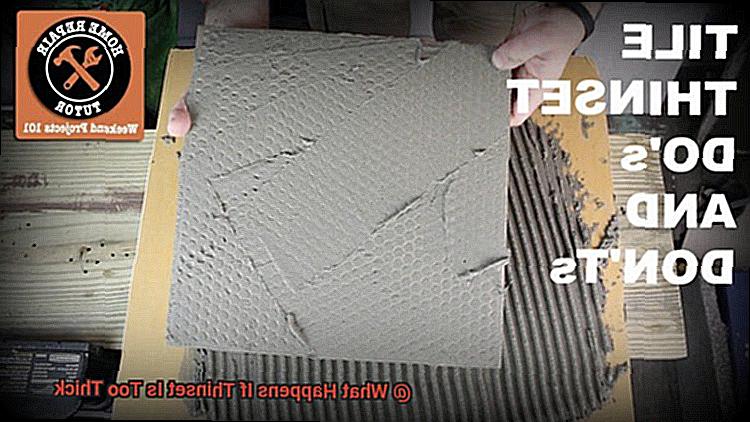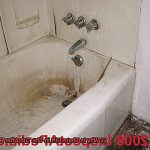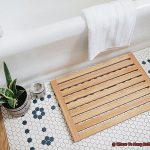Are you a DIY enthusiast or a seasoned contractor who’s about to embark on a tile installation project?
If so, you’re probably familiar with the importance of thinset. It’s the versatile adhesive that bonds tiles to the substrate, providing a strong grip and a flawless finish.
However, working with thinset can be tricky, and if not applied correctly, it can lead to disastrous results. One of the most common mistakes people make is applying thinset that’s too thick.
But what happens if thinset is too thick? In this blog post, we’ll explore the consequences of using thick thinset and why you should avoid it at all costs.
We’ll delve into the effects on your tiles, substrate, and the longevity of your installation. You’ll also learn how to rectify the situation if you’ve already made this mistake.
Contents
What Happens If Thinset Is Too Thick
Longer Drying Time
When it comes to tiling, thinset is the glue that holds everything together.
But like any adhesive, too much of it can cause problems.
One of the most common issues that arise when thinset is applied too thickly is a longer drying time.
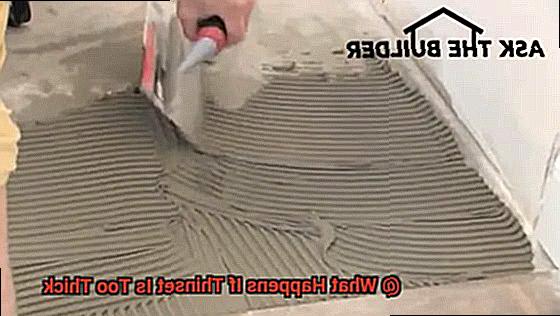
Just like a cake with too much batter, it takes longer to bake and may not turn out right. A longer drying time can throw off your project schedule and weaken the bond between the tiles and substrate.
This can lead to other issues like cracking or shrinkage, which can compromise your installation’s integrity. It’s like building a house on an unstable foundation – it’s not going to last.
The best way to prevent these issues is by using the right amount of thinset for your project. Follow manufacturer guidelines, mix the thinset to the correct consistency and thickness, and use a notched trowel to spread it evenly over the substrate.
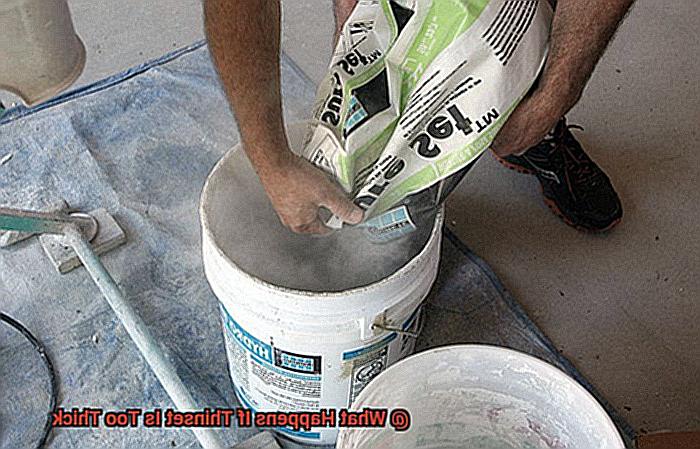
It’s like making a sandwich – just enough filling to hold everything in place without spilling out. Using too much thinset can also cause lippage, where one tile sits higher than its adjacent tiles, creating a tripping hazard.
It can also make it difficult to level your tiles properly, especially if you’re working with larger tiles or an uneven substrate. Overall, using too much thinset can seriously impact your installation’s quality and longevity.
Take the time to mix and apply your thinset correctly to ensure that your tiles stay in place and look great for years to come.
Lippage
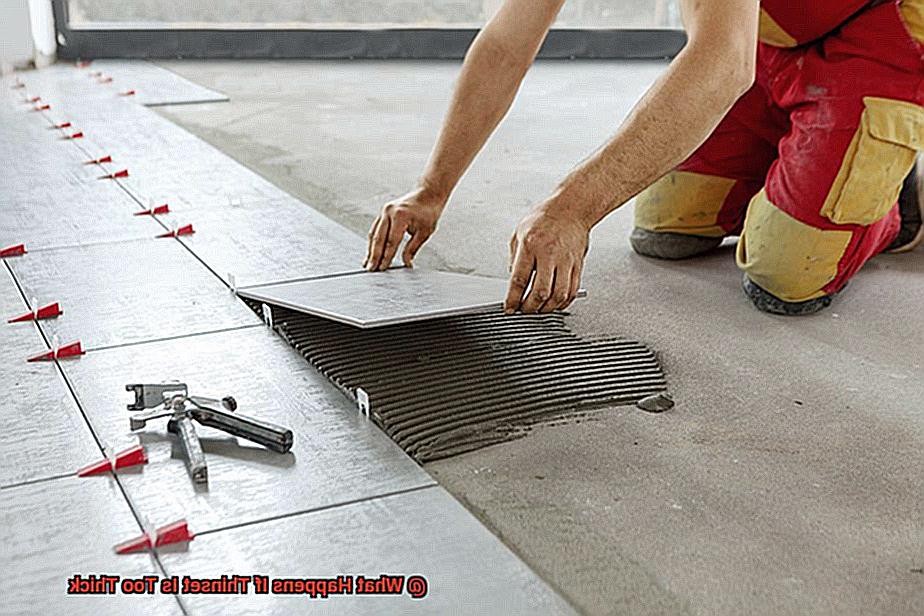
With a little guidance and attention to detail, you can easily avoid this unsightly and potentially dangerous issue. So, what exactly is lippage?
Put simply, it’s when one edge of a tile is higher than the adjacent tiles, resulting in an uneven surface. This is often caused by using too much thinset during installation.
Thinset is the adhesive used to secure the tile to the surface, and when there’s an excessive amount used, it can push the tile up and create lippage. This is especially true for larger tiles that require more thinset to ensure proper adhesion.
But that’s not the only culprit here. Improper trowel size can also result in lippage.
Using a trowel that’s too large will apply too much thinset, leading to an uneven surface. Conversely, using a trowel that’s too small won’t provide enough thinset for proper adhesion, causing potential cracks or loosening over time.
To prevent lippage caused by thick thinset, it’s crucial to follow manufacturer instructions for proper application. This includes using the recommended trowel size and not applying too much thinset.
Additionally, before installation, it’s important to check the flatness of the surface. Any dips or bumps can cause lippage even with proper thinset application.
Difficulty Leveling Tiles
One of the most common causes of these issues is using thinset that is too thick.
Thick adhesive doesn’t allow for proper contact between the tile and the substrate, leading to difficulty in leveling the tiles properly. Think of thick thinset as a stubborn toddler who just won’t cooperate.
It can cause the tiles to shift or move during installation, leading to lippage that can be unsightly and create a tripping hazard. Furthermore, it can prolong the drying and curing process, causing frustration for both contractors and homeowners who are eager to complete the installation.
If the adhesive doesn’t fully cure, it can weaken over time, leading to costly repairs. To avoid these issues, it is crucial to mix the thinset properly and follow the manufacturer’s instructions carefully.
Using the correct trowel size for the type and size of tile being installed is also essential. If you do encounter problems with thick thinset, it may be necessary to remove the tiles and start over with fresh adhesive.
The Impact of Too Much Thinset on Tile Installation Quality and Longevity
While using enough thinset is crucial to secure the tiles, going overboard with it can actually have a negative impact on the quality and longevity of the installation.
Think of it like spreading too much frosting on a cake – it may look nice and thick at first, but as it dries and hardens, it becomes unstable and can even crack or slide off the cake entirely. Excess thinset can cause a range of problems, including shifting and complete failure of the installation.
When you use too much thinset, it creates an uneven surface that the tiles can’t properly adhere to. It’s like building a house on an unstable foundation – eventually, it’s going to crumble.
But that’s not all – too much thinset can also cause cracking in the tiles themselves. As the thinset dries, it exerts pressure on the tiles that can cause them to crack or break if they aren’t properly supported.
It’s like putting too much weight on a weak branch – eventually, it’s going to snap. To avoid these issues, it’s important to measure and apply the appropriate amount of thinset for each installation.
Factors to Consider When Using Thinset
If you’re planning to install new tiles in your home, using thinset is crucial for a successful installation.
But did you know that the consistency of thinset plays a vital role in determining the strength and durability of your tile installation? Let’s dive deeper into why it’s essential to consider these factors when using thinset.
The consistency of thinset is like the frosting on a cake – too much or too thick can lead to several problems during tile installation. For instance, if the thinset is too thick, it can be challenging to trowel it onto the substrate evenly.
This uneven application can compromise the integrity of the entire installation and make it difficult to embed tiles or other materials properly. Moreover, thick thinset takes longer to dry and cure, delaying the grouting stage and increasing the risk of shrinkage cracks forming as it dries.
This can prolong the installation process and increase the chances of your tile installation going wrong. Lastly, thicker than required thinset results in a weaker bond between the substrate and tile or material being installed.
This weak bond not only compromises the strength of the installation but also increases the risk of tiles becoming loose or cracking over time. Therefore, it’s crucial to ensure that you mix the thinset to the correct consistency before use.
This will not only ensure a successful installation but also make it strong, durable, and long-lasting.
By paying attention to these factors, you can avoid any potential mishaps during your tile installation process.
Tips for Properly Applying Thinset
As you embark on your tiling project, it’s essential to realize that the thickness of the thinset plays a crucial role in the success of your installation. Thinset is designed to be applied in a thin layer, typically no more than 1/4 inch thick.
If you apply it too thickly, it can lead to a host of problems that can compromise the integrity of your tile installation.
To ensure that your thinset is the right consistency, it’s essential to follow the manufacturer’s instructions when mixing it.
Mixing too much water or powder can make the mixture too thick, leading to slower drying times and weaker adhesion between the tile and substrate. Always mix thoroughly until you achieve a smooth, lump-free consistency.
Avoiding Lippage with Proper Thinset Application
Lippage is a common problem that occurs when tiles are set at uneven heights, creating an unattractive and potentially hazardous surface. This issue often arises from using too much thinset during installation.
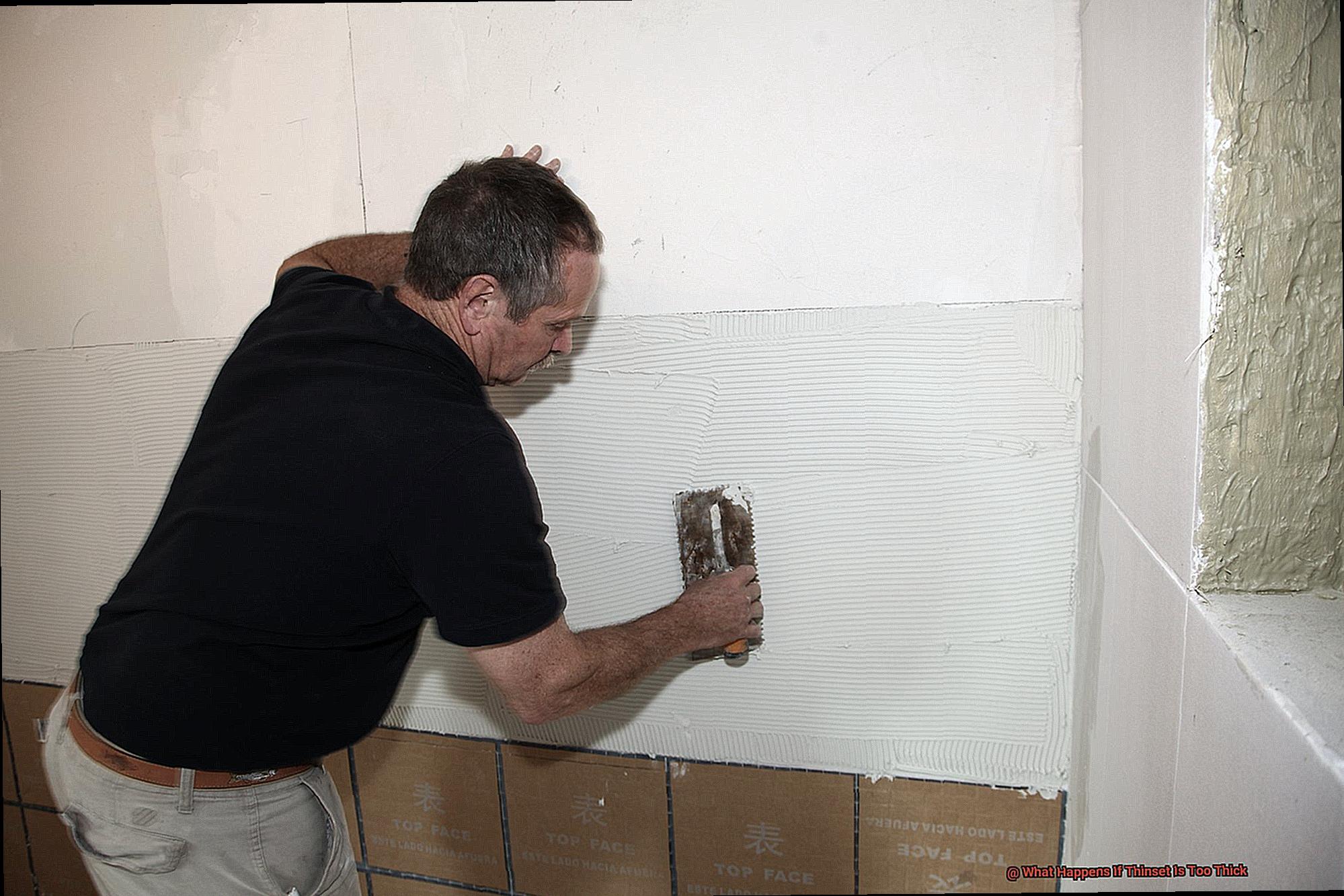
When you press a tile into thick thinset, it can sink down and create a gap between itself and the surrounding tiles. The result is an uneven surface that’s not only unsightly but also dangerous to walk on.
To avoid lippage, use the right amount of thinset that’s recommended for your specific project. As you spread the thinset with a notched trowel, apply even pressure to avoid compressing or creating an uneven surface.
Achieving a Smooth Surface with Proper Thinset Consistency
Using the right amount of thinset is key to achieving a smooth and even surface for your tiles. Thick or lumpy thinset can make it challenging to level tiles properly, particularly if you’re working with larger tiles or an uneven substrate. To avoid this problem, mix your thinset to the proper consistency and avoid using too much force when applying it.
As you use your notched trowel to spread thinset, apply even pressure and avoid overworking the mixture. This will help ensure that you achieve a smooth surface that’s level and even.
The Dangers of Using Old or Partially Hardened Thinset
Using old or partially hardened thinset can lead to weak adhesion between the tile and substrate, which can cause tiles to come loose or crack over time. Always mix only as much thinset as you can use within its pot life. Using old or partially hardened thinset can compromise the integrity of your tile installation, so it’s best to err on the side of caution and mix fresh batches as needed.
Tips for Properly Applying Thinset
To properly apply thinset, start by mixing it to the proper consistency, following the manufacturer’s instructions carefully.
Dhnzl_Zl6zc” >
Conclusion
To sum it up, thinset is a crucial adhesive for tile installation projects.
However, if you apply it too thickly, you may face several issues that can compromise the quality and longevity of your installation. These problems may include extended drying times, lippage, difficulty leveling tiles, and weaker adhesion between the substrate and tile.
To avoid these issues, make sure to mix the thinset properly and follow manufacturer instructions carefully. Also, use the appropriate amount of thinset for your project and avoid using old or partially hardened thinset.
Additionally, before installation, check the flatness of your surface. To achieve a successful tile installation with no mishaps, pay attention to the consistency of your thinset and apply just enough for a sturdy and beautiful finish.

